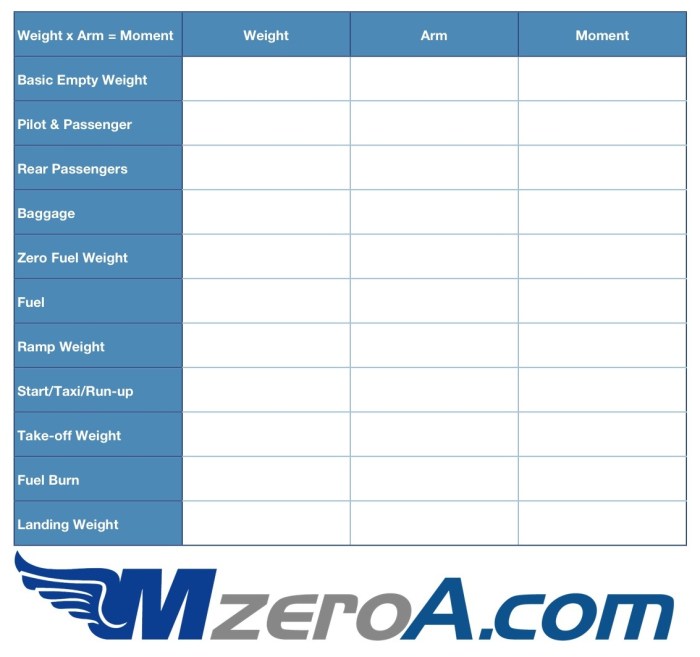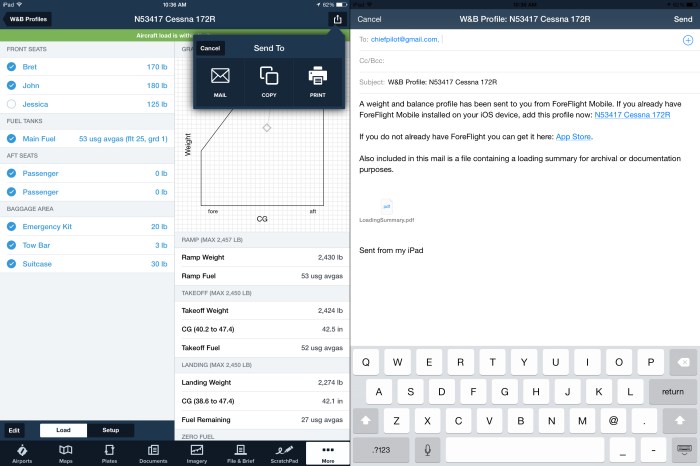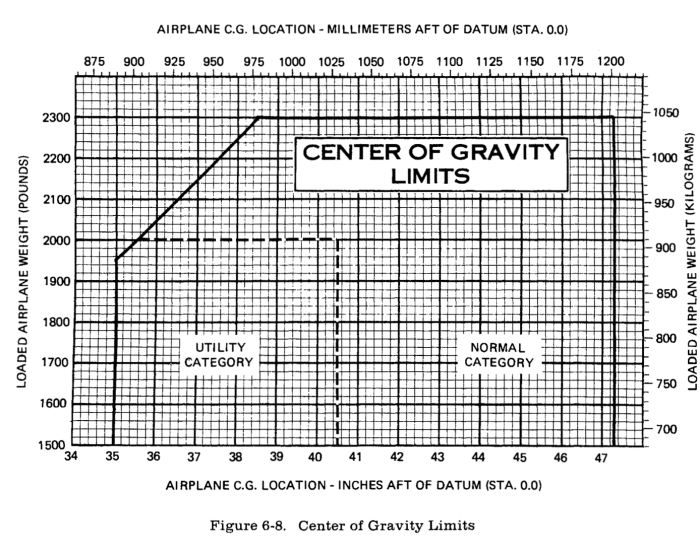Understanding the Cessna 172S weight and balance sheet is crucial for ensuring the safety and efficiency of aircraft operations. This guide provides a comprehensive overview of weight and balance calculations, the weight and balance envelope, the weight and balance sheet, and weight and balance considerations for different flight conditions.
Proper weight and balance are essential for maintaining aircraft stability, controllability, and performance. By adhering to the weight and balance envelope and using the weight and balance sheet, pilots can ensure that their aircraft is operating within safe limits.
Weight and Balance Calculations

Weight and balance are crucial in aircraft operations as they impact flight performance, safety, and efficiency. In the case of the Cessna 172S, maintaining proper weight and balance is essential for stable flight, optimal handling, and compliance with regulatory requirements.
Step-by-Step Weight and Balance Calculation for Cessna 172S
Calculating the weight and balance of a Cessna 172S involves the following steps:
1. Determine the basic empty weight
This is the weight of the aircraft without any fuel, passengers, or cargo. It can be found in the aircraft’s weight and balance manual.
2. Add the weight of fuel
Multiply the fuel quantity in gallons by the fuel density (6.0 pounds per gallon).
3. Add the weight of passengers
Multiply the number of passengers by the average weight per passenger (typically 170 pounds).
4. Add the weight of cargo
Weigh the cargo and add its weight to the total.
5. Calculate the total weight
Sum up the basic empty weight, fuel weight, passenger weight, and cargo weight.
6. Calculate the moment
Multiply the weight of each item by its respective arm (distance from the datum). Sum up these moments to obtain the total moment.
7. Calculate the center of gravity (CG)
Divide the total moment by the total weight to determine the CG location.
8. Check the CG limits
Ensure that the calculated CG falls within the allowable CG range specified in the aircraft’s weight and balance manual.
Impact of Passenger and Cargo Loading on Weight and Balance, Cessna 172s weight and balance sheet
The loading of passengers and cargo significantly affects the weight and balance of the Cessna 172S. Adding weight in the front of the aircraft will move the CG forward, while adding weight in the rear will move the CG backward.It
is important to consider the distribution of passengers and cargo to maintain proper weight and balance. For example, placing heavy cargo in the baggage compartment at the rear of the aircraft can shift the CG aft, requiring additional ballast in the front to compensate.Failure
to properly calculate and maintain weight and balance can lead to adverse flight characteristics, reduced performance, and potential safety hazards. Therefore, it is crucial for pilots to adhere to weight and balance requirements and ensure that the aircraft is loaded within the specified limits.
Weight and Balance Envelope

The weight and balance envelope of a Cessna 172S is a diagram that shows the allowable combinations of weight and center of gravity (CG) for safe flight. The envelope is defined by the aircraft’s design limits, which are determined by factors such as structural strength, stability, and controllability.It
is crucial to stay within the weight and balance envelope for safe flight. Exceeding the envelope can have serious consequences, including:
- Reduced stability and controllability
- Increased risk of stalls and spins
- Damage to the aircraft structure
- Failure of the aircraft to meet performance specifications
For example, if the aircraft is overloaded, the CG may move aft, which can make the aircraft more difficult to control and increase the risk of a stall. Conversely, if the aircraft is underloaded, the CG may move forward, which can make the aircraft more difficult to maneuver and increase the risk of a spin.
Weight and Balance Sheet

The weight and balance sheet is a crucial document for any aircraft, as it provides the necessary information to ensure that the aircraft is operated within its weight and balance limits. The weight and balance sheet for the Cessna 172S is designed to help pilots accurately calculate the weight and balance of the aircraft before each flight.
The sheet is divided into four sections: aircraft weight, passenger weight, cargo weight, and fuel weight. The aircraft weight section includes the empty weight of the aircraft, as well as any fixed equipment that is installed. The passenger weight section includes the weight of all passengers on board, while the cargo weight section includes the weight of any cargo that is being carried.
The fuel weight section includes the weight of all fuel that is on board.
Using the Weight and Balance Sheet
To use the weight and balance sheet, pilots must first enter the empty weight of the aircraft and the weight of any fixed equipment that is installed. They must then add the weight of all passengers and cargo that will be on board.
Finally, they must add the weight of all fuel that will be on board.
Once all of the weights have been entered, pilots can calculate the total weight of the aircraft. They can then use the weight and balance envelope to determine if the aircraft is within its weight and balance limits. If the aircraft is not within its limits, pilots must adjust the weight or balance of the aircraft before flying.
Weight and Balance Considerations for Different Flight Conditions

Weight and balance are critical factors in aircraft operation, and they must be carefully considered for different flight conditions. The weight and balance of an aircraft can affect its performance, stability, and safety.
The weight and balance of an aircraft are affected by a number of factors, including the weight of the aircraft, the distribution of the weight, and the location of the center of gravity. The weight of the aircraft is determined by the weight of the airframe, the engine, the fuel, the passengers, and the cargo.
The distribution of the weight is determined by the location of these items within the aircraft. The center of gravity is the point at which the weight of the aircraft is evenly distributed.
Takeoff
During takeoff, the weight and balance of an aircraft are critical. The aircraft must have enough power to overcome the force of gravity and lift off the ground. The aircraft must also be balanced so that it does not tip over.
To ensure a safe takeoff, the weight and balance of the aircraft must be within the limits specified by the manufacturer.
Landing
During landing, the weight and balance of an aircraft are also critical. The aircraft must have enough lift to slow down and land safely. The aircraft must also be balanced so that it does not stall or spin. To ensure a safe landing, the weight and balance of the aircraft must be within the limits specified by the manufacturer.
Cruise Flight
During cruise flight, the weight and balance of an aircraft are less critical than during takeoff and landing. However, the weight and balance of the aircraft must still be within the limits specified by the manufacturer. This is to ensure that the aircraft is stable and controllable.
Safety Implications of Weight and Balance: Cessna 172s Weight And Balance Sheet

Improper weight and balance can have significant safety implications for aircraft operation. It can affect the aircraft’s stability, controllability, and performance, potentially leading to accidents or incidents.
Stability
Weight and balance influence an aircraft’s stability, which is its ability to return to a balanced state after a disturbance. Improper weight distribution can alter the aircraft’s center of gravity (CG), making it less stable and more prone to oscillations or spins.
Controllability
Weight and balance also affect controllability, which is the aircraft’s ability to respond to pilot inputs. Incorrect CG can make the aircraft unresponsive or sluggish to control, especially during maneuvers like turns or landings.
Performance
Improper weight and balance can impact aircraft performance, affecting its speed, climb rate, and fuel efficiency. An overloaded aircraft may experience reduced performance, while an aircraft with an aft CG may have difficulty climbing or maintaining altitude.
Examples of Accidents or Incidents
Numerous accidents and incidents have been attributed to improper weight and balance. For example, in 1996, a Boeing 747 crashed near Jeddah, Saudi Arabia, due to incorrect cargo loading, resulting in the deaths of all 349 people on board.
Essential FAQs
What is the weight and balance envelope of a Cessna 172S?
The weight and balance envelope of a Cessna 172S is a graphical representation of the allowable weight and balance combinations for safe flight. It defines the limits within which the aircraft can be operated without exceeding structural or performance limitations.
How do I use the Cessna 172S weight and balance sheet?
The Cessna 172S weight and balance sheet is used to calculate the weight and balance of the aircraft before each flight. It includes sections for aircraft weight, passenger weight, cargo weight, and fuel weight. By entering the relevant information into the sheet, pilots can determine the aircraft’s weight and balance and ensure that it is within the allowable limits.
What are the safety implications of improper weight and balance?
Improper weight and balance can have serious safety implications. It can affect aircraft stability, controllability, and performance, making it more difficult to fly and increasing the risk of accidents or incidents. For example, an aircraft that is overweight or improperly balanced may be more difficult to control during takeoff and landing, and may experience reduced performance in climb and cruise flight.